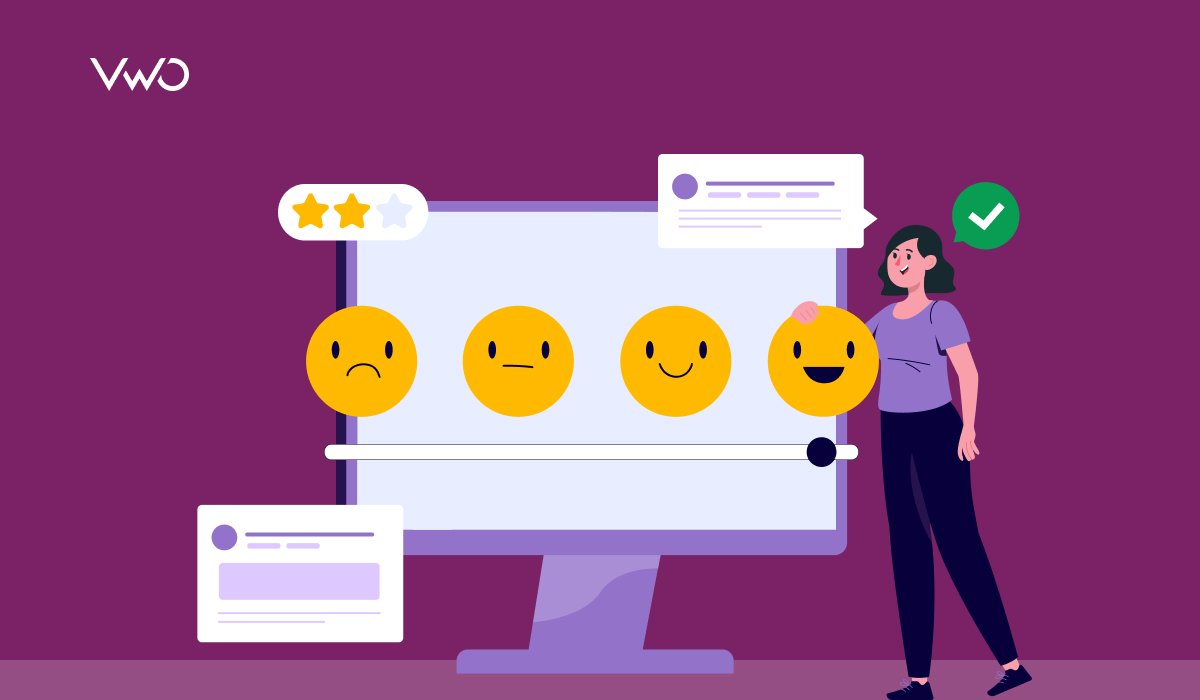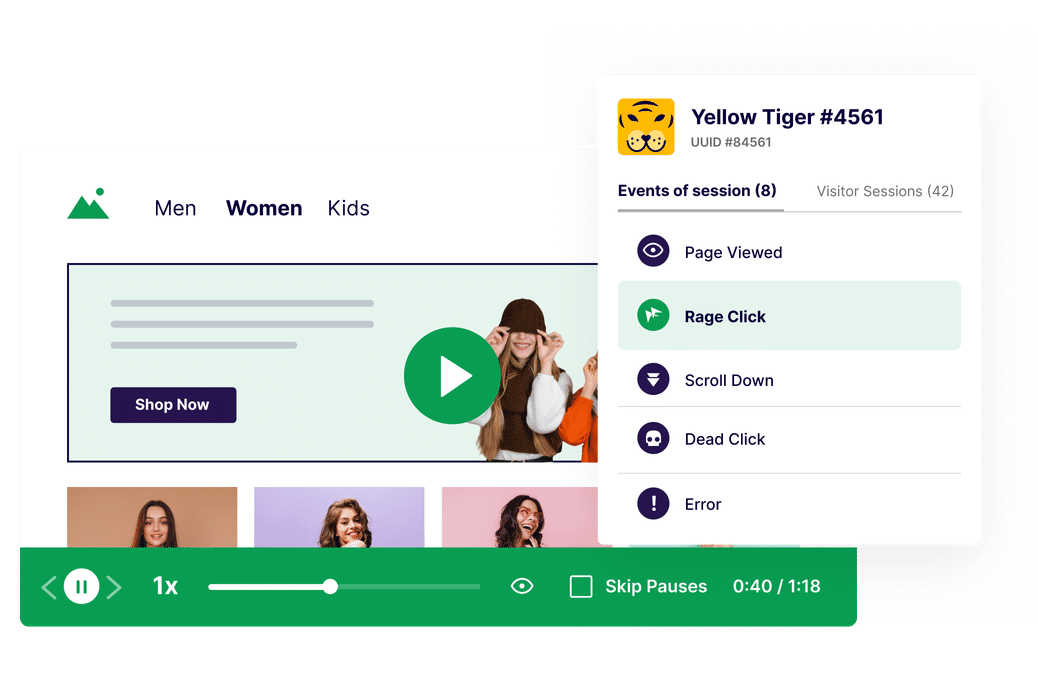How to Improve NPS (Net Promoter Score): Steps & Proven Tips to Boost Customer Loyalty
An order arrives late, and no one follows up on it.
Struggles with a confusing checkout.
A support ticket drags on for weeks without resolution.
When customers face situations like these, they don’t complain; they leave. And their exit shows up in your NPS survey as detractors, lowering your score.
This is the hidden story behind every stagnant NPS report. It’s not just a number; it’s a signal of broken customer experiences and missed opportunities for customer loyalty.
The good news? With the right approach, you can spot these pain points, fix them, and steadily turn detractors into promoters. In this guide, we’ll show you how to improve NPS with proven steps and practical tips that transform customer feedback into growth.

What does improved NPS mean?
When your Net Promoter Score (NPS) improves, it reflects stronger customer loyalty and satisfaction, as well as a healthier perception of your brand. It indicates that more satisfied customers are becoming Promoters: eager to recommend your business, while fewer remain as Detractors who might leave or share negative feedback.
For instance, consider a mid-sized SaaS company that notices, through NPS surveys, that detractors are mostly frustrated with a complex onboarding process. By simplifying sign-up and adding in-app guidance, the business could expect fewer early drop-offs and a noticeable lift in its NPS score over the next few months, while also unlocking more referrals from satisfied customers.
In practice, a rising NPS translates into higher word-of-mouth referrals, lower churn, and ultimately, greater potential for sustainable business growth through positive customer experiences.
Start with your baseline: Measure where you stand
Before you can improve your Net Promoter Score, you need to understand your current position. A baseline score gives you clarity on how customers feel today and sets a benchmark for measuring progress over time. Without it, any effort to improve NPS is like aiming without a target.
How this works in practice:
Imagine an eCommerce brand wants to establish its baseline. It sends out a simple NPS survey asking, “How likely are you to recommend us to a friend or colleague?”
- Out of 1,000 responses, 500 customers give a 9 or 10 (Promoters).
- 300 customers score them a 7 or 8 (Passives).
- 200 customers score them between 0 and 6 (Detractors).
The calculation looks like this:
- Promoters: 50%
- Detractors: 20%
- NPS = 50 – 20 = 30
To understand the “why” behind these numbers, the brand also includes a follow-up question for existing customers: “What’s the main reason for your score?” Detractors often mention slow delivery times, while Promoters highlight product quality.
Now, the company not only knows its baseline score is 30 but also has clear insight into what drives customer satisfaction and what needs fixing.
By comparing this with industry benchmarks, the picture becomes clearer. Recent reports show that fashion brands average an NPS of around 40, consumer electronics hover closer to 52, and global leaders like Apple hold steady at 61. Against this backdrop, a score of 30 is below average for the retail and eCommerce verticals, a clear signal that the company must act.
The upside? These benchmarks give the business both context and a realistic target for improvement.
Steps to improve your net promoter score
Once you’ve measured your baseline, the big question is: what do you do with it? Improving NPS isn’t about chasing numbers; it’s about listening to customer feedback and acting on what they tell you. Think of it as a cycle: measure → understand → act → measure again. Here’s how you can put that into practice:
1. Close the loop with customers
When was the last time you personally reached out to a customer who gave you a low score? Closing the loop means doing exactly that – showing detractors that their NPS feedback matters. Even a short call or email saying, “We hear you, and here’s what we’re doing about it,” can turn frustration into loyalty.
And don’t forget promoters. A quick thank-you note, or an invitation to join your referral program, makes them feel appreciated and more likely to recommend you further.
2. Rally the organization around NPS
NPS can’t live in a silo. If your marketing team celebrates promoters, your product team fixes recurring complaints, and your support team uses detractor feedback to improve responses, then the entire company moves in sync. Share NPS results openly, and don’t be afraid to connect them to team goals. When everyone owns customer experience, improvements multiply.
3. Establish regular NPS touchpoints
Do you only look at your NPS once a quarter? If so, you’re probably missing the story between the numbers. The most successful companies hold quick “NPS huddles”: 10–15 minute reviews where cross-functional teams look at recent feedback and also examine other customer satisfaction metrics.
Combining relationship NPS (overall brand sentiment) with transactional NPS (specific touchpoints like onboarding or delivery) helps you understand the overall customer base and where things break down.
4. Train staff using real feedback
Numbers don’t change behavior; stories do. Instead of telling your support team “Our NPS is down,” show them what customers actually said. Comments like, “I love how quickly my issue was resolved,” or “I wish someone had updated me about the delay,” are powerful teaching moments.
Use them in training sessions, role-plays, and coaching. It builds empathy and turns customer feedback into action.
5. Design and optimize your surveys
Be honest – would you answer a 10-question survey on your phone? Probably not. The same goes for your customers. Keep surveys short (ideally two questions: the score + “why?”), mobile-friendly, and personal.
Send them from a real person’s email, and time them thoughtfully: after delivery, after onboarding, or once a support ticket is closed. A well-designed survey doesn’t just increase response rates; it gives you richer insights.
6. Benchmark and set realistic goals
Here’s a common trap: obsessing over the “perfect” NPS. The truth is, what counts as “good” varies by industry. A 25 in telecom can be stellar, while the same score in SaaS may signal trouble.
Start by benchmarking against your sector, but also focus on beating your own past performance. Aim for steady, realistic lifts, say, 5 to 10 points over six months. That way, your teams stay motivated without burning out.
7. Track, test, and iterate
Improving NPS is a journey, not a destination. The smartest companies treat it like an ongoing experiment: test a change, measure the impact, and refine. For instance, if detractors complain about a clunky checkout process, simplify it for a test group and see if their scores improve. Linking NPS changes to outcomes, like reduced churn or higher upsell rates, helps prove the value of every improvement.
13 tips to improve the NPS score
Improving NPS isn’t always about large structural changes; small, consistent improvements can make a big difference. Here are ten practical tips you can start applying immediately to see quick progress in your score:
- Segment your follow-ups: Don’t send the same message to promoters, passives, and detractors. Tailor your outreach to each group.
- Use promoters as a growth engine: Invite them to join referral or ambassador programs; they’re already your advocates.
- Spot “silent detractors”: Look for customers who never respond to surveys. Often, silence signals disengagement. Reach out before they churn.
- Act fast on “hot feedback”: If someone leaves an angry comment in a survey, respond the same day. Speed matters more than polish.
- Celebrate small wins internally: Share one great promoter comment in your team Slack or huddle. It keeps morale tied to customer happiness.
- Look for root causes: Instead of patching surface-level complaints, dig deeper to uncover what’s really driving low scores. For example, repeated “late delivery” complaints might trace back to a specific warehouse issue.
- Experiment with survey channels: Email isn’t the only way. Try in-app, SMS, or WhatsApp surveys to boost responses.
- Mind the wording: Even slight tweaks (“recommend us to a colleague” vs. “recommend us to a friend”) can impact how customers interpret the question. Test what works best.
- Close the loop publicly when possible: Share updates like “You asked for faster checkouts, here’s the new one-click option” in newsletters or on social media. It builds trust.
- Don’t ignore passives: They’re often just one good experience away from becoming promoters. Small gestures like a personalized thank-you or exclusive discount can tip the balance.
- Simplify processes: Long forms, confusing checkouts, or slow onboarding frustrate customers. Streamline these processes so interactions with your brand feel effortless.
- Personalize the customer experience: Generic surveys and one-size-fits-all messages don’t inspire customer loyalty. Address customers by name, tailor communication, and show them you know their history with your brand.
- Offer self-help options: Customers value independence. Create clear, easy-to-use resources, like FAQs, chatbots, or how-to videos, so they can solve problems without waiting for support.
What factors can impact NPS scores?
Your Net Promoter Score is more than just a reflection of customer opinions on one product or service. It’s influenced by multiple touchpoints, perceptions, and customer expectations across the entire customer journey. Here are the key factors that can significantly impact your NPS:
Product quality and reliability
If a product doesn’t work as promised, whether it’s due to software bugs, fragile hardware, or poor consistency, customers lose trust quickly. A reliable, high-quality product is the foundation of turning passives into promoters.
Customer service experience
Support is often where emotions run highest. Long wait times, robotic replies, or unresolved issues can turn even loyal customers into detractors. On the flip side, fast, empathetic, and empowered support teams can win customers back.
Ease of use and processes
Confusing interfaces, slow onboarding, or complex checkouts create friction that drags scores down. Streamlined, user-friendly processes make customers feel valued and respected, directly lifting NPS.
Value for money
Customers constantly compare prices against perceived value. If they believe they’re paying fairly for the benefits they receive, NPS rises. If not, even a good product can attract negative customer feedback.
Brand reputation and trust
Public perception matters. A company known for transparency, ethical practices, and reliability earns higher loyalty. Conversely, mishandled crises, security breaches, or bad press can damage NPS overnight.
Service culture
A strong service culture starts with empowered employees. When staff are trusted to make decisions, trained to handle challenges, and supported by leadership, they create experiences that feel personal and reliable. Customers respond to that consistency with greater trust and loyalty, as reflected in stronger NPS scores.
Consistency across touchpoints
Great service at one stage can’t always make up for poor customer experiences at another. Customers judge the entire journey: shopping, billing, delivery, after-sales; not just one interaction.
Meeting and exceeding expectations
It’s not enough to meet the basic promise; brands that go the extra mile often see the biggest lift in NPS. Exceeding customer expectations, like a faster-than-expected delivery or proactive support, creates promoters who spread the word.
Customer journey visibility
Journey mapping isn’t a direct driver of NPS, but it shows you what’s holding it back. It reveals where breakdowns occur, such as confusing onboarding, slow support, or unclear billing. Identifying and addressing these pain points ensures a smoother customer experience that directly lifts customer satisfaction and NPS.
Coming back to our baseline example of the eCommerce brand with an NPS of 30:
Through NPS survey analysis, the company identified a clear pattern. While promoters praised product quality and fair pricing, detractors repeatedly mentioned slow delivery updates and a complicated returns process. A simple root-cause analysis would reveal that the communication system didn’t provide real-time tracking, and the return policy involved too many manual steps.
Here’s how the problem could be solved: the brand could roll out live delivery tracking, simplify returns with prepaid labels, and equip support staff with better tools to update customers. Taken together, these improvements would likely increase NPS by reducing detractor complaints and building stronger customer trust.
Drive NPS growth with VWO
Raising your Net Promoter Score isn’t just about running surveys; it’s about understanding why customers feel the way they do, fixing the root causes of friction, and delivering experiences that create loyalty.
VWO Insights uncovers the story behind your NPS scores. In our ongoing eCommerce example, the brand could use:
User analytics:
- Heatmaps to see which areas of the returns page attract clicks and which are ignored.
- Session recordings would replay real user journeys, capturing behaviors like hesitation, rage clicks, or abandonment.
On-page surveys:
- Use behavior-based triggers (e.g., exit intent, order completion) to capture feedback in the moment.
- Apply segmentation to reach specific groups such as first-time buyers or repeat customers.
- Customize surveys with multilingual support and branding, including your company logo or other custom design elements on on-page surveys.
- Leverage VWO Copilot to generate goal-driven questions and summarize responses into actionable insights.
- Ask tailored follow-up questions with conditional branching—for example, request more details from visitors who give a low NPS score.
- Auto-calculate NPS and understand how likely visitors are to recommend your product or service.
In our eCommerce example, the brand could trigger a survey specifically for customers initiating a return. By targeting only this group, the feedback becomes sharper and more actionable, revealing exactly what needs fixing.
Experimentation
With VWO Testing, validate changes backed by real customer insights instead of assumptions. Test every change, big or small, before rolling it out.
For example, if surveys reveal that customers are frustrated with a complex returns process, or heatmaps show repeated clicks on an unresponsive element, you can A/B test a streamlined three-step flow against the old version to see which performs better.
Further, you can run advanced experiments such as multivariate and server-side tests to explore everything from design tweaks to backend logic. By combining test results with survey feedback (like NPS), you can confirm that improvements not only lift conversions but also enhance customer satisfaction.
Personalization:
VWO Personalize closes the loop by delivering tailored experiences to different customer segments.
For example, repeat buyers could be shown messaging like “hassle-free returns, every time” on the product page, building confidence before purchase and reducing the risk of detractor experiences later.
This is especially powerful for moving passives toward promoter territory by making their journeys smoother and more relevant.
Use VWO Copilot to reduce manual effort in your optimization workflow. It can generate test ideas, create copy variations, summarize survey feedback, and analyze large volumes of data to surface key insights from user behavior. The result: less time spent analyzing and more time spent improving customer experiences, a critical driver in the NPS journey.
Find out how VWO fits into your NPS strategy and drives better customer experiences. Book a free demo today.
Frequently asked questions (FAQs)
A good NPS depends on your industry. In general, any score above 0 means you have more promoters than detractors, and 50+ is considered excellent. But the most meaningful benchmark is both how you compare to industry averages and whether you’re improving your own score over time.
An increase in NPS shows that more customers are enthusiastic advocates of your brand, while fewer are dissatisfied detractors. It signals rising loyalty, lower churn, and a higher likelihood of positive word-of-mouth driving business growth.








![10 Best Product Management Tools [2026]](https://static.wingify.com/gcp/uploads/sites/3/2025/01/Feature-image-10-Best-Product-Management-Tools-2025.jpg?tr=h-600)













